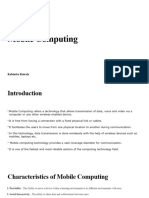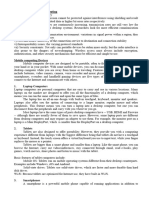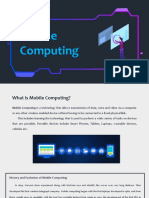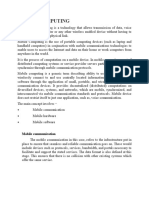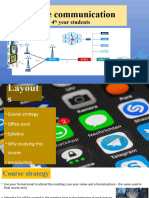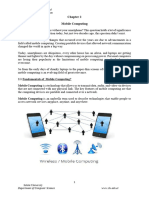CHARACTERISTICS OF MOBILE COMPUTING
1. Portability - The Ability to move a device within a learning environment or to
different environments with ease.
2. Social Interactivity - The ability to share data and collaboration between users.
3. Context Sensitivity - The ability to gather and respond to real or simulated data unique to
a current location, environment, or time.
4. Connectivity - The ability to be digitally connected for the purpose of communication of
data in any environment.
5. Individual - The ability to use the technology to provide scaffolding on difficult activities
and lesson customization for individual learners.
6. Small Size - Mobile devices are also known as handhelds, palmtops and smart phones due
to their roughly phone-like dimensions. Mobile devices make use of touch screens and small
keypads to receive input, maintaining their small size and independence from external
interface devices. The standard form of a mobile device allows the user to operate it with one
hand, holding the device in the palm or fingers while executing its functions with the thumb.
7. Wireless Communication - Base mobile devices are capable of accessing the Internet
through Bluetooth or Wi-Fi networks, and many models are equipped to access cell phone
and wireless data networks as well. Email and texting are standard ways of communicating
with mobile devices, although many are also capable of telephony, and some specialized
mobile devices, such as RFID and barcode.
